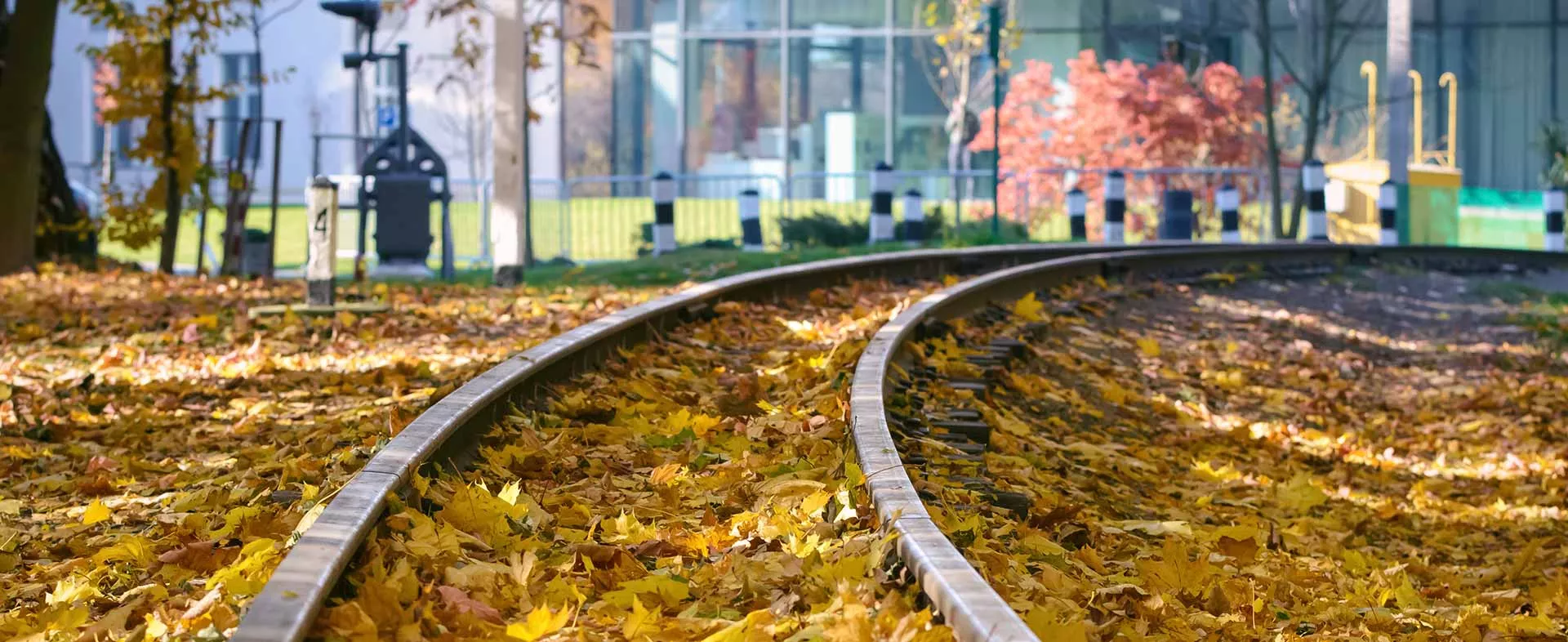
How we handle leaves on the line
When autumn leaf-fall meets wet track, the combination can disrupt rail traffic and cause delays. Our SNCF Réseau teams are doing everything they can to stay one step ahead and keep trains running.
A problem familiar to operators the world over
Autumn is one of the main times of the year when adhesion becomes a problem. As leaves and rain fall onto the tracks, passing trains compact them into a thin, slippery layer that dramatically reduces grip—much like black ice on a road. It is a problem familiar to operators the world over.
Combatting slippery leaves
Preventing risks related to poor adhesion
Getting a grip
Adhérence is an in-house project that includes experts in rail traffic, network maintenance, driving and rolling stock. Together, they’re working to improve our response to the two major issues caused by low wheel-to-rail adhesion: wheel spin and wheel slide.
What is wheel spin?
Wheel spin is a lack of adhesion when the train accelerates. When wheels can’t grip the track, they spin, making it hard for drivers to accelerate and run at normal speeds. This can delay your train or even reduce it to a standstill. When that happens, traffic grinds to a halt until a locomotive arrives to assist the disabled train.
What is wheel slide?
Poor adhesion also makes braking distances longer. In the worst cases, the wheel locks and slides along the track, causing enough damage to both wheels and track to require maintenance.

80
high-pressure water-jet trains and sleet-brush trains (16 and 64 respectively) keep our lines clean

480 km
of track are cleaned daily

A Météo France
weather bulletin
pinpoints the areas at risk
How we’re responding
Solving slide with software
Today’s rolling stock is designed with fewer wheels, reducing points of contact with the rails. That means that each axle has to work harder during braking and acceleration—but if they apply too much force, the wheels may slip or lock. Wheel slide protection software aboard our trains can limit slippage during braking, much like the ABS system on a car. Together, these 2 measures help limit wheel profile damage and reduce maintenance time. As always, the aim is to avoid cancelling trains and deliver safe, comfortable, on-time service for our customers.
Pruning and clearing brush
To keep leaves and other plant debris to a minimum, we start pruning and clearing brush in the spring, focusing on particularly vulnerable high-risk areas.
Cleaning the rails
Leaf-busting trains take priority over other traffic, clearing the rails of debris and significantly reducing the risk of losing wheel-to-rail adhesion. The tools we use:
- The Sleet Brush system is a “dry cleaning” method that scrapes off deposits by brushing the rail vigorously with a set of steel blades.
- We also treat and clean nearly 300 metres of track near our Haute-Picardie station in northern France with a light, portable tool adapted from an existing system for clearing plant growth from platforms.
Helping drivers brake sooner
Repairing rolling stock
When tracks are coated with slippery leaves, a train can keep moving even if the wheels are locked. Braking time is longer and the rail acts as a plane, leaving flattened areas on the wheel’s profile. These are called wheel flats. When this happens, the train must go to the workshop, where the wheel is machined and restored to its original profile. This operation is carried out in a maintenance pit using a machine tool to smooth out the wheel surface. In the most extreme cases, a full wheel replacement may be necessary. These are major maintenance operations, requiring specialized facilities and extended downtime for the damaged train.
Training and awareness
We’re also taking new steps to improve reports by and for our drivers, and we routinely use awareness campaigns to help adjust their driving techniques.
A provisional transport plan
We also work with mobility authorities to develop and deploy a transport plan that protects our rolling stock during high-risk periods. As always, the aim is to keep train delays and cancellations to a minimum.
Other innovations and solutions
Share the article